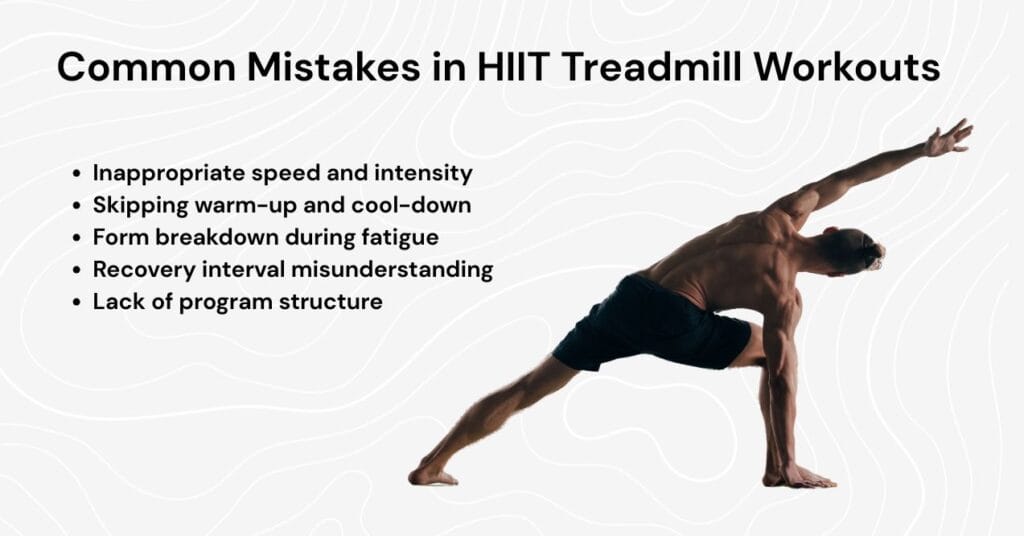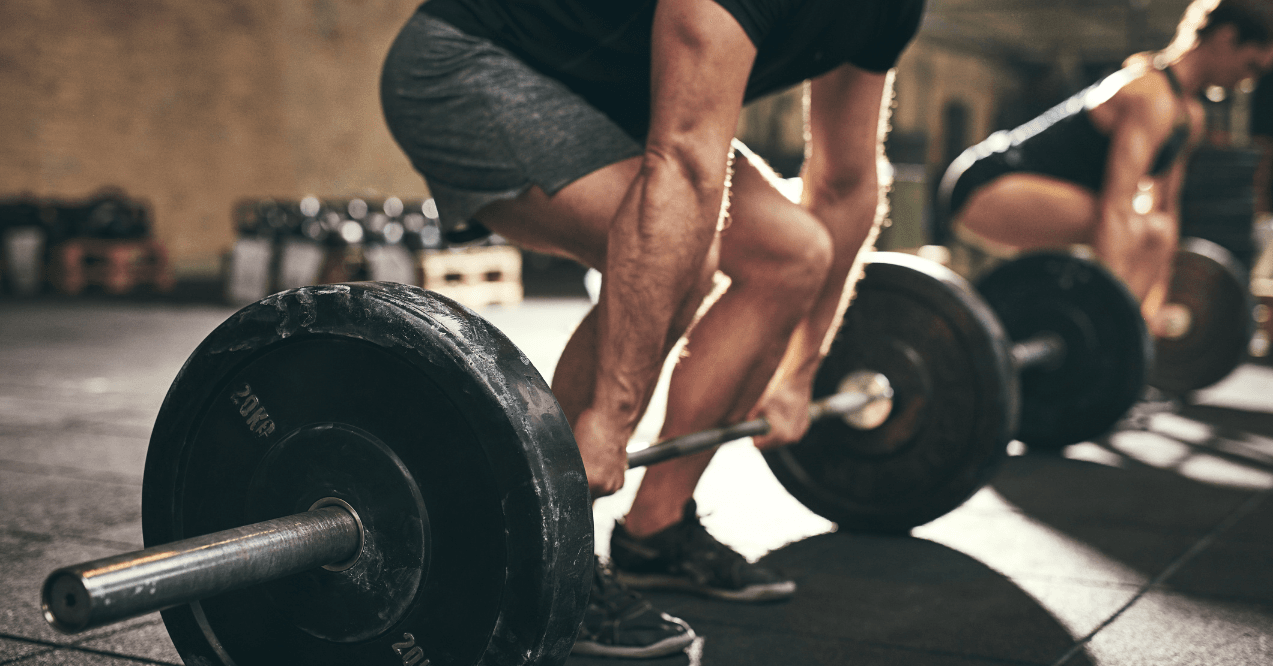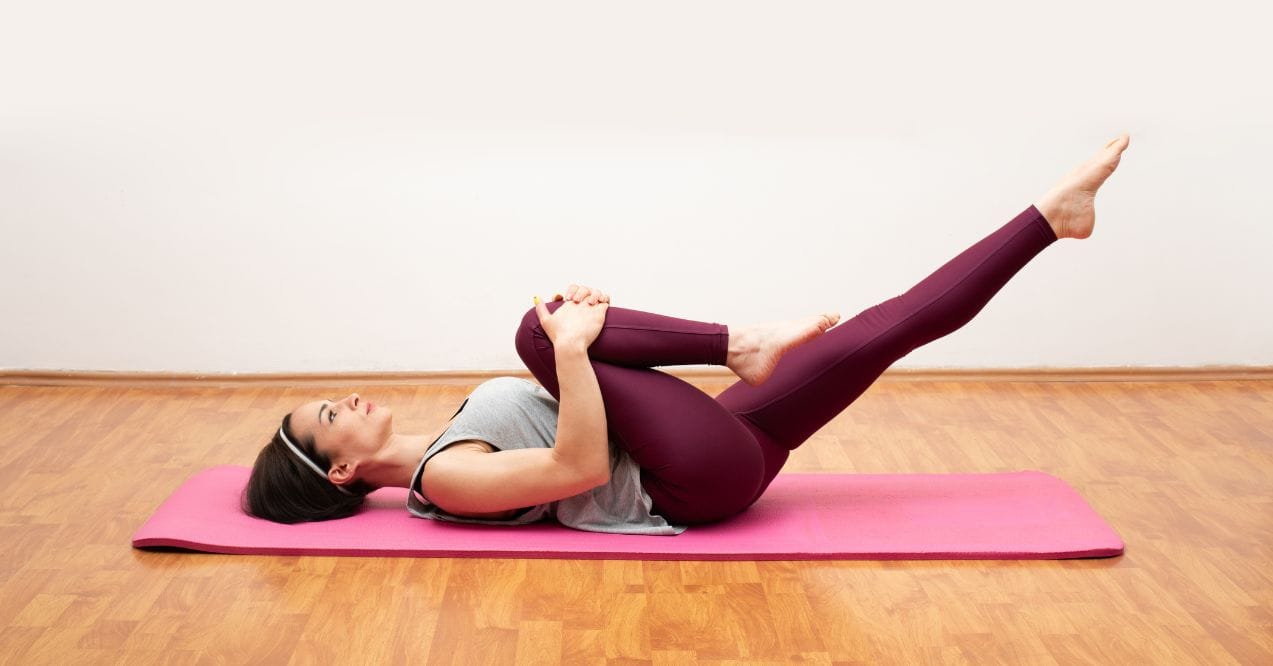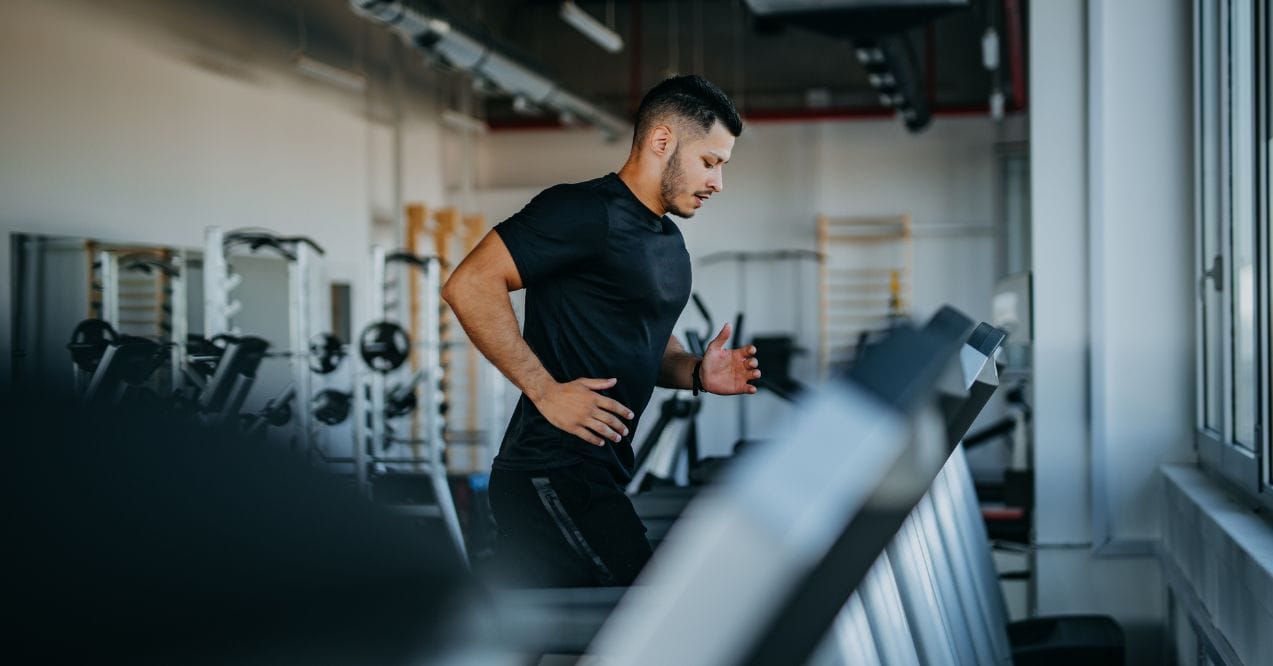HIIT Training Treadmill Workout for Maximum Fat Burn
Looking to transform your cardio routine? A HIIT training treadmill workout might be exactly what you need. These high-intensity sessions alternate between powerful bursts of effort and brief recovery periods, helping you burn calories long after you’ve stepped off the machine. The beauty of treadmill HIIT lies in its efficiency – you’ll get more results in less time compared to steady-state cardio.
Whether you’re a fitness beginner or seasoned athlete, HIIT workouts can be customized to match your fitness level while supporting your endurance and helping to maintain a healthy weight. Ready to rev up your treadmill routine?
Why Do HIIT Workouts on a Treadmill?
When you’re looking to level up your fitness routine, combining the power of a treadmill with interval training treadmill sessions creates a perfect storm for results. But what makes treadmill HIIT so special?
For starters, HIIT treadmill workouts torch calories at an impressive rate. The alternating pattern of high-intensity bursts followed by recovery periods creates what fitness experts call the “afterburn effect” – your body continues burning calories hours after you’ve finished your workout. This makes it an excellent addition to any cutting workout plan focused on shedding unwanted pounds.
The cardiovascular benefits are equally impressive. These workouts strengthen your heart, improve oxygen utilization, and boost your overall endurance faster than steady-state cardio. Your heart learns to efficiently shift between intensity levels, which translates to better performance in daily activities.
Time efficiency might be the most attractive benefit in our busy world. Consider this:
- A 20-minute HIIT session can deliver comparable or better results than 45 minutes of steady jogging
- You can fit a complete workout into your lunch break
- Less time on the treadmill means less joint impact overall
Accessibility is another major advantage. The treadmill allows you to:
- Control your exact speed and incline
- Work out regardless of weather conditions
- Track your progress precisely
- Exercise in a safe, controlled environment
Perhaps best of all, interval training treadmill workouts scale beautifully for all fitness levels. Beginners can start with walking intervals, while advanced athletes can incorporate sprints and steep inclines. This adaptability makes treadmill HIIT a sustainable approach to fitness that evolves with you on your journey.
How to Structure a HIIT Treadmill Workout
Creating an effective treadmill HIIT workout requires thoughtful planning rather than random sprints. Start with a proper foundation to maximize your results and minimize injury risk.
Always begin with a 5-minute warm-up at a comfortable pace to prepare your muscles and cardiovascular system. This might be a brisk walk or light jog depending on your fitness level.
For the main workout, choose a work-to-rest ratio that matches your goals:
- Beginners – Try 1:2 (30 seconds intense, 60 seconds recovery)
- Intermediate – Aim for 1:1 (30 seconds each)
- Advanced – Challenge yourself with 2:1 (40 seconds intense, 20 seconds recovery)
Speed and incline adjustments create variety and challenge. You can:
- Increase speed while keeping incline steady
- Maintain speed while raising incline
- Combine both for maximum intensity
Always finish with a 5-minute cooldown of decreasing intensity and gentle stretching to help your body recover properly and reduce muscle soreness.
HIIT Training Treadmill Workout

Let’s dive into five powerful treadmill HIIT workouts that deliver maximum results. Each routine targets different aspects of fitness while keeping your sessions fresh and challenging.
Classic HIIT Sprint Workout
This foundational HIIT cardio treadmill routine delivers impressive results through its simplicity. After warming up for 5 minutes:
- Sprint at 80-90% effort for 30 seconds
- Walk or slow jog for 90 seconds
- Repeat 8-10 times
- Cool down for 5 minutes
This workout improves your anaerobic capacity while building explosive power. The longer recovery periods make it accessible for beginners while still challenging seasoned runners when intensity is increased.
Hill Sprint Intervals
This incline-focused challenge builds lower body strength while elevating your heart rate:
- Set incline to 4-6% and sprint for 20 seconds
- Return to flat incline and walk for 60 seconds
- Repeat 10-12 times
- Increase incline by 1-2% for advanced training
The added resistance from the incline activates more muscle fibers in your glutes and hamstrings, creating both strength and endurance benefits in one workout.
Pyramid Intervals
This sprint workout on treadmill gradually builds intensity before bringing you back down:
- Start at moderate pace (60% effort) for 60 seconds
- Increase speed every minute (70%, 80%, 90%, 100%)
- Decrease speed every minute (90%, 80%, 70%, 60%)
- Repeat 2-3 times
The pyramid structure allows you to push your limits while ensuring adequate recovery, perfect for improving your lactate threshold.
Tabata Treadmill Workout
This intense treadmill HIIT workout for fat loss follows the famous 20/10 Tabata protocol:
- Sprint at maximum effort for 20 seconds
- Rest for 10 seconds
- Complete 8 rounds (4 minutes total)
- Rest 2 minutes and repeat 2-3 times
This ultra-efficient format maximizes calorie burn through extremely high intensity work periods with minimal rest.
Fartlek Treadmill Workout
This playful “speed play” approach keeps workouts fresh:
- Jog at comfortable pace for 2 minutes
- Randomly select sprints of varying lengths (15-60 seconds)
- Return to comfortable pace between sprints
- Continue for 20 minutes, adjusting intensity intuitively
The unpredictable nature mimics real-world running conditions and prevents training plateaus through constant variation.
How Long Should a HIIT Treadmill Workout Be?
The ideal length of your HIIT treadmill session depends on several factors, with intensity being the most important. When done properly, these workouts are meant to be short but powerful.
For most people, a complete HIIT treadmill workout should last between 20-30 minutes total, including warm-up and cooldown periods. The actual high-intensity interval portion typically ranges from 10-20 minutes. This timeframe allows you to maintain the necessary intensity without compromising form or risking injury.
Your fitness level plays a crucial role in determining duration:
- Beginners should start with just 5-10 minutes of interval work (plus warm-up/cooldown)
- Intermediate exercisers can aim for 10-15 minutes of intervals
- Advanced athletes might push to 15-20 minutes of high-intensity work
The work-to-rest ratio also affects appropriate duration. More intense protocols like Tabata (20 seconds work/10 seconds rest) naturally limit how long you can maintain quality effort.
It’s important to note that more isn’t always better with HIIT. The effectiveness comes from the intensity, not the duration. If you can sustain your “high-intensity” effort for more than 30 minutes, you’re likely not pushing hard enough during work intervals to trigger the metabolic benefits that make HIIT so effective.
Treadmill HIIT Tips for Beginners
Starting HIIT training on treadmill for beginners can feel intimidating, but with the right approach, you’ll be sprinting with confidence in no time. Here’s how to make your early HIIT journey safe and effective.
Start by mastering proper treadmill form. Keep your posture upright with a slight forward lean, shoulders relaxed, and eyes looking ahead – not down at your feet. Land midfoot rather than on your heels to reduce impact, and maintain a comfortable arm swing without crossing your body’s midline.
Pacing is crucial when beginning HIIT workouts. Your “high-intensity” intervals should feel challenging but sustainable for the designated time. A good rule: if you can’t hold a conversation during recovery periods, you’re pushing too hard in your work intervals.
Heart rate monitoring provides valuable feedback for beginners. Aim for:
- Work intervals – 80-90% of your maximum heart rate
- Recovery intervals – 60-70% of maximum
Avoid these common beginner mistakes:
- Skipping warm-ups (always spend 5 minutes preparing your body)
- Starting too intensely (gradually increase over weeks)
- Using excessive incline before mastering flat sprints
- Holding onto handrails (reduces effectiveness and natural movement)
Rest is just as important as the workout itself. Limit HIIT sessions to 2-3 times weekly with at least 48 hours between workouts to allow for proper recovery.
How to Maximize Your HIIT Treadmill Results
Getting the most from your high intensity treadmill workouts for weight loss requires a strategic approach both on and off the machine. Follow these evidence-based techniques to amplify your results and break through plateaus.
Progressive overload is essential for continued improvement. Every 1-2 weeks, challenge yourself by:
- Increasing sprint speeds by 0.2-0.5 mph
- Adding 1-2% more incline during work intervals
- Shortening rest periods by 5-10 seconds
- Adding one more interval to your total workout
Finding the right workout frequency creates the perfect balance between stimulus and recovery. Most people see optimal results with 3-4 HIIT sessions weekly, always allowing at least 24-48 hours between sessions for muscle repair.
Hydration affects your performance more than you might realize. Aim to drink:
- 16-20oz of water 2 hours before training
- 8oz just before your session begins
- Small sips during recovery intervals
- 16-24oz in the hours following your workout
For those wondering what to eat before a HIIT workout, consider these tips:
- Consume a balanced meal with carbs and protein 2-3 hours before your workout
- For early morning sessions, try a small carb-based snack 30 minutes before
- Refuel within 30-60 minutes post-workout with protein and carbs to support muscle recovery
Nutrition plays a crucial role in fueling performance and supporting recovery. For optimal post-workout replenishment, consider adding Bone Broth Protein powder to your routine. With 20 grams of clean protein per serving and delicious chocolate flavor, it provides essential building blocks after intense HIIT sessions. The collagen and amino acids support muscle growth and joint comfort – particularly beneficial for high-impact treadmill workouts.
For maximum results, pair your recovery nutrition with proper pre-workout support. By combining with Trumeta Pre-Workout powder, you’ll tackle challenging intervals with enhanced energy and focus. Its balanced formula provides clean energy without jitters, while beta-alanine supports endurance through those final sprints. The B vitamins help maintain intensity throughout your session, allowing you to push harder and maximize your calorie burn.
Common Mistakes in HIIT Treadmill Workouts

Even with the best intentions, many exercisers sabotage their results on the interval training running machine through common errors. Knowing what to watch for can help you avoid these pitfalls.
One significant mistake is selecting inappropriate speeds. Many beginners choose work intervals that are too intense, making proper form impossible, or recovery periods that are too challenging, preventing adequate rest. Start conservative and gradually increase as your fitness improves.
Neglecting proper warm-up and cooldown phases is another frequent error. These critical components prepare your cardiovascular system and muscles for intensity and help prevent knee and ankle pain after your workout.
Form deterioration during fatigue leads to many issues. Watch for:
- Excessive heel striking
- Hunched posture
- Overstriding
- Gripping handrails
Each of these compromises results and increases injury risk. If you notice form breaking down, reduce your intensity immediately.
Many exercisers also misunderstand recovery intervals, either working too hard (not allowing true recovery) or waiting until heart rate returns completely to baseline (reducing the cumulative training effect).
Finally, program inconsistency prevents adaptation. Randomly selecting workouts without progressive structure limits your body’s ability to make the physiological changes that lead to improved fitness and performance.
Conclusion
The power of a hiit training treadmill workout lies in its versatility and efficiency. By alternating between intense bursts of effort and strategic recovery periods, you’re able to transform a standard cardio session into a fat-burning, fitness-boosting powerhouse. Whether you’re drawn to classic sprints, challenging hills, or the structured intensity of Tabata, there’s a HIIT treadmill approach that fits your goals and fitness level.
Remember to start with proper form, progress gradually, and allow adequate recovery between sessions. With consistency and attention to the techniques outlined above, you’ll maximize your results while minimizing your time investment – the ultimate fitness win-win
Start with a 5-minute warm-up, then alternate between high-intensity intervals (30-60 seconds at 80-90% effort) and recovery periods (30-90 seconds at 40-50% effort). Adjust speed and incline to create intensity. Finish with a 5-minute cooldown and stretching.
Yes, treadmill HIIT is highly effective. It burns calories during and after your workout thanks to the afterburn effect, improves cardiovascular fitness, saves time compared to steady-state cardio, and can be adjusted to any fitness level.
Absolutely. A properly structured 20-minute HIIT workout, including warm-up and cooldown, provides sufficient stimulus for fitness gains. The intensity matters more than duration – you’ll get better results from 20 minutes of true high-intensity work than longer moderate sessions.
Advertisement. This site offers health, wellness, fitness and nutritional information and is designed for educational purposes only. You should not rely on this information as a substitute for, nor does it replace, professional medical advice, diagnosis, or treatment. If you have any concerns or questions about your health, you should always consult with a physician or other health-care professional. Do not disregard, avoid or delay obtaining medical or health related advice from your health-care professional because of something you may have read on this site. The use of any information provided on this site is solely at your own risk.







